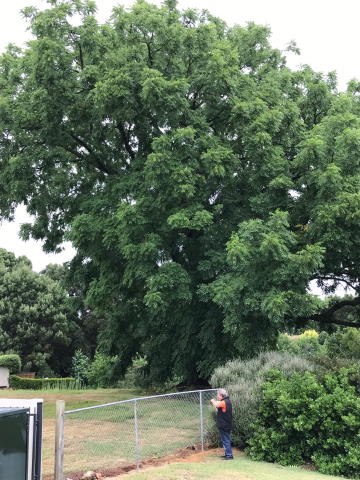American Black Walnut (Juglans nigra) II
This tree, standing sentinel above the entrance to Lola Silcock Park in Bath Street, is the same protected tree I wrote about last month. But this time we will be looking at the historical significance of the species.
Native to the United States east of the Rocky Mountains, the Black Walnut is easily recognised by its huge crown and dark, ridged bark. Its nuts are deeply corrugated and very tough, making them resistant to rat attack. Despite the difficulty of breaking them however, black walnuts have been used for oil and protein by indigenous Americans for over 4000 years. Their flavour is more intense than that of the ‘English’ walnut. Today most of the harvest of black walnuts comes from near Missouri.
The tree has had a strong association with the American military since the nineteenth century. The wood is very solid, shock-resistant and buffs up to a handsome chocolate-brown with a fine raised grain, giving a good grip. During the Civil War in the 1860s it was invaluable for making gunstocks, and this gave rise to the saying ‘shouldering the walnut’, meaning to join the army. Walnut husks were used to dye the homespun uniforms of the Confederate soldiers a brownish-grey colour, and also to make the ink with which they wrote letters home to their loved ones. In World War I the wood was used to make aircraft propellers, and in World War II powdered walnut shells were mixed with nitroglycerine to make a form of dynamite. Finally in a macabre twist, the wood is also used to make the coffins we have seen on TV being unloaded from military planes. (Around the World in 80 Trees)


